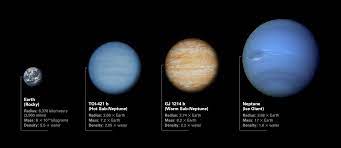
Sub-Neptunian Planets

04.12.2023
Sub-Neptunian Planets , Daily Current Affairs , RACE IAS : Best IAS Coaching in Lucknow
|
For Prelims: About Search, About Sub-Neptune, Importance of discovery For Mains Paper: About Neptune, Neptune's structure and surface |
Why in news:
Recently astronomers have found six rare planets in the solar system orbiting a Sun-like star 100 light years away.
Important points:
- About 100 light-years away from Earth, astronomers have discovered a group of six planets orbiting together around a Sun-like star.
- This constellation is estimated to be billions of years old and is in the Coma Berenices constellation.
- The team of astronomers used NASA's TESS and the European Space Agency's Cheops for their observations.
About Search:
- The six planets orbit their central star in a rhythmic rhythm, a rare case of "in sync" gravitational lockstep that could provide deep insight into planet formation and evolution.
- The star, smaller and cooler than our Sun, actually hosts a strange family of planets: six "sub-Neptunes" – possibly smaller versions of our own Neptune – spinning in a cyclical rhythm.
About Sub-Neptune:
- These are the most commonly observed type of planets in our galaxy.
- They may be rocky worlds with dense atmospheres composed primarily of helium gas, or perhaps formed of rock and ice with warm, water-rich atmospheres.
- The trinity of these planets is between Earth and Neptune.
Importance of discovery:
- The discovery of new planets could help understand how celestial bodies formed and why many of them are between the size of Earth and Neptune.
- The discovery could reveal more mysteries about the planets in the galaxy.
- According to astronomer Rafael Luque of the University of Chicago, "This discovery is going to be a benchmark system for studying how sub-Neptunes form, evolve, what they're made of.
About Neptune:
- This is the last planet of our solar system.
- It is 30 times farther from the Sun than Earth.
- Neptune is very similar to Uranus. This Earth-sized solid center is made of water, water and a dense fog of methane.
- It is basically composed of helium and methane.
- A day on Neptune is equal to 16 hours.
- Neptune's journey around the Sun is so long that it completes one revolution in 165 Earth years.
Neptune's structure and surface:
- Neptune is worth more than six lakhs.
- It is composed of a super-condensed mixture of water, oxygen and methane based on an Earth-sized solid core.
There is a dense, airy atmosphere.